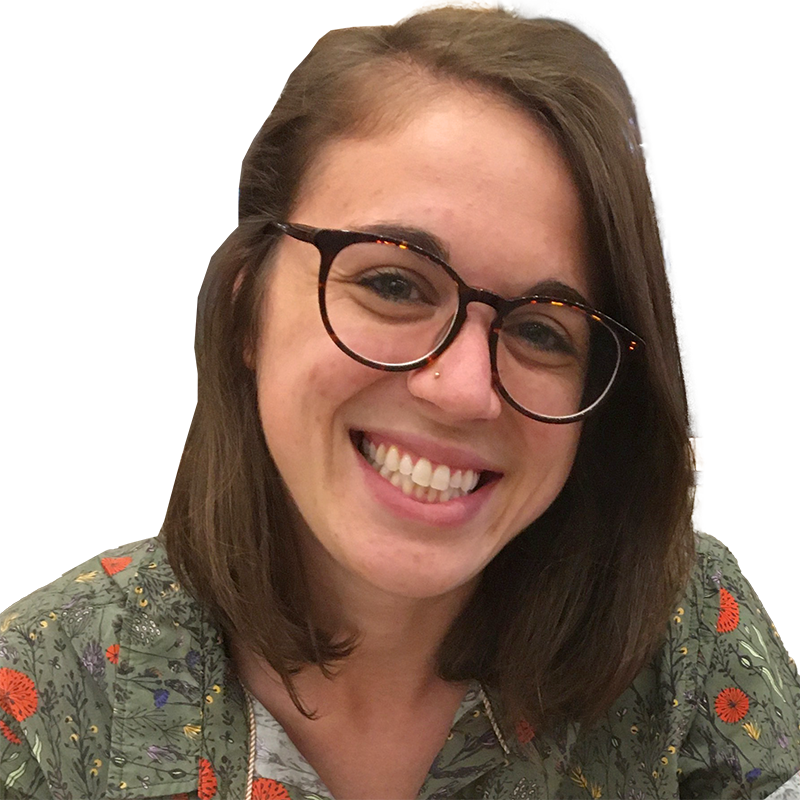Creative and brand strategy, Strategic planning
When Inspiration Meets Insights: A Q&A with MissionWired Creative Leads Bob Albrecht and Sara Guggisberg
When it comes to helping our nonprofit partners tell the unique story of their mission in a way that is authentic and compelling, our creative process is a marriage of art and data: It’s rooted in a clear understanding of the organization’s values and sharply focused on results that tell us how this work is resonating with their audience. And it’s committed to telling the kind of story that will energize their supporters, inspiring them to take action.
To unpack the layers in this approach to creative strategy, I sat down with our creative leadership, Bob Albrecht and Sara Guggisberg, to talk through the components of a strong brand identity and what is distinctive about MissionWired’s approach to strategic partnerships.
KN: When beginning to work with a new partner, how does MissionWired approach the creative process? What parts of that approach remain consistent across partnerships, and how is each partnership individualized?
SG: When we enter into a new partnership, the intention that we bring to your program is consistent: We’ll focus on absorbing and adapting to your brand, and we’ll spend a period of time in a discovery phase, which has the same structure from one organization to the next. From there, our process is differentiated for each nonprofit because we’ll be following the insights we’ve gained and the data we’ve gathered along the way – all of which tell us the best strategic direction to take.
BA: Our approach is always rooted in asking, How can we help you tell a story that’s uniquely yours – and do so in a way that is exciting and creative and energizing? And the answer to that question will move us in a new direction every time. We see a lot of direct marketers admire organizations that tell simple stories of powerful impact. And for certain programs, this is a compelling and proven approach. But for other organizations, those with missions that are inherently more complex and multifaceted, to try to distill them to something so simple would make them fall flat.
Our intention is to come in with new partners and gain an understanding of their values, what drives them, and what has powered their success so far. Then we bring those core elements of their identity to their supporters and donors in ways that are new, compelling, and engaging.
KN: In the simplest sense, why is it important for an organization to have a clear, strong brand identity?
SG: Working in the nonprofit space, you know that you aren’t the only organization in your field. Nearly all the organizations we work with have several comparable programs within their vertical working toward missions that, while of course not identical, will be perceived by supporters as similar. And so because you’re working with a limited window of attention, and a limited number of people who are inclined to give toward a particular cause, there’s all the more reason to have a recognizable brand and a compelling value statement. The more clearly you can share that with a donor, the more you’ll be capable of moving them to take action, and to trust that their donation will lead to something powerful and impactful.
BA: Once you’ve built a brand identity and articulated who you are and the work that you do, all else flows from that. If your brand doesn’t resonate, then you’ll have more work to do to communicate around that missing connection in your day-to-day messaging. But organizations with a clear and compelling brand have the space to get more creative, take more chances, and put out new work that pushes the boundaries of what’s possible for their programs.
KN: It seems like MissionWired’s brand and rebrand journey over recent years might be a good example here. Can you talk about that process?
BA: In 2021, we changed our name from Anne Lewis Strategies to MissionWired to be more representative of our work and our people. Our past brand identity, which centered more directly around Anne Lewis, was no longer reflective of how multifaceted our team had grown to be and of how many people held themselves accountable for the success of our partnerships. As we grew, the story that the name Anne Lewis Strategies told no longer reflected our identity. Once we renamed ourselves MissionWired, the connection between our name and our people felt innate, and telling the story of our values became more natural and cohesive.
KN: In your years in the fundraising and advocacy industry, how have you honed your understanding of how to produce work that’s both creative and informed by data and results?
BA: It’s deeply creative work, but I’ve come to understand it as creative in the right way. A client very wisely would describe this as “freedom within a frame” – this idea of being maximally creative within the context of what’s true and effective according to the conversation that’s being conducted. And so, where in the past I might have come into creative spaces and brought my own perspective, perhaps a little too firmly, I’ve since learned to be more responsive to the data and to the best story – the one that the organization feels like it can embrace with confidence.
SG: And our creative strategy is so dependent on performance: We’re constantly looking at results to make sure that what we’re doing is effective. That kind of steady information gathering is ever evolving as the audience is telling us – in their response to one subject versus another – what they want to hear more of. By constantly partnering our art with that data, we’re making sure that what we’re doing is impactful, motivating, and compelling, but that it also has an infrastructure under it – built on what we have found works for a particular audience or client.
This means paying close attention to small, tactical details, like testing first lines and buttons and highlighted text. But it also means paying attention to the moment we’re in. We need to continue to look at the data while also being predictive about the environment around us and learning enough about our donors to anticipate what our donors might do next, before the data shows it. Asking ourselves questions, like how we can tailor our work to this moment of inflation, for instance, can be a critical kind of predictive strategy.
KN: In partnering with a wide range of organizations, each with a unique mission, how do you balance authenticity to each program’s brand with an effort to offer new and creative approaches?
SG: So much of that balance is struck internally, in the way we approach collaboration and assemble our teams: We share the results from testing with one another, across clients, in testing trackers. Our #inspired-by channel in Slack is a resource for creative work across the industry that catches our eye. We offer facilitation training to our accounts teams to help them raise good ideas for our partners. And we always staff our teams intentionally by finding the folks who are enthusiastic about a partner’s particular field and by considering, in both hiring and staffing, how we can carry diverse perspectives and experiences to help shape our point of view.
It’s absolutely a privilege to be able to take on the voices of our clients and to speak about the people that they serve and partner with. We don’t take that role lightly: We’re committed to making sure that as we’re translating those voices online, we’re doing it in a way that is authentic and representative of their communities. In any of the work we do, we need to ensure that we are able to search for our own bias as well as for places where we can better represent the work and the clients. It’s work that is ongoing because we’re always trying to improve. In the nonprofit space, where one community is talking about supporting another community, it is particularly crucial that we are mindful of bias and inequity. We’re always working to staff our teams with intention and to be perpetually improving our approach to DEI, and we believe these efforts have a big impact on the messaging that arrives in inboxes at the end of the day.
Next insight


